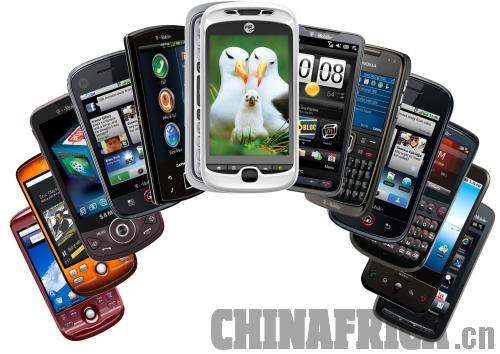| 
Walk around any Chinese city and one of the most common sights you will see are people chatting into cellphones or busy focusing on their handsets, often to the exclusion of all else.
Whether it be updating a status on the micro-blogging site Sina Weibo, or simply sending a text message to a friend through the online messaging service Tencent QQ, smartphones have now become far more than an accessory – they are now a necessity.
Making a choice
As the sun sets over the busy Xidan shopping area of Beijing, two friends, 28-year-old Li Jiang and 24-year-old American Corey McCullough, both employees at a marketing firm, argue about which smartphone can better serve their technological needs.
"For me, an iPhone is a necessity. It can do anything that I want with a click of a button. I bought my iPhone 4S for around $1,000, almost two months of my salary, but it was worth every cent," beamed Li as he talked through his latest applications.
However, McCullough has rebuked the wonders of Apple and Nokia and has purchased a Chinese made Huawei Titan Android U8800 for $280. "This phone does everything that I need, and it cost a fraction of the price of an iPhone or HTC. Chinese smartphones are not only a cheaper alternative, but they are also practical as they can be fixed at any store," he added, leading into an intense debate with his colleague.
As more and more people are becoming dependent on smartphones to aid their daily lives, a battle has commenced between homegrown and imported devices for the heart of the Chinese smartphone market.
Talking figures
China has overtaken the United States in becoming the largest mobile phone market in the world. The nation currently has over 952 million mobile phone users. Global brands such as Apple, Nokia, Blackberry and HTC have seen their sales skyrocket in recent years. According to research done by Strategy Analytics, in the last quarter of 2011, smartphone shipments rose to a record 24 million units. In the United States, however, shipments fell 7 percent sequentially to 23.3 million units.
"China's rapid growth has been driven by an increasing availability of smartphones in retail channels, aggressive subsidizing by operators of high-end models like the Apple iPhone, and an emerging wave of low-cost Android models from local Chinese brands such as ZTE. Nokia currently leads China's smartphone market with 28 percent share, while HTC leads the U.S. smartphone market with 24 percent share," said Tom Kang, Director at Strategy Analytics, in a recent interview.
Despite this growth, top imported brands are facing fierce competition from Chinese companies such as Huawei and ZTE, who have recently launched an assault on this industry by developing top of the range smartphones at affordable prices.
This danger has already sent ripples through the phone world as Apple's market share fell to 7.5 percent in the fourth quarter of 2011, from 10.4 percent in the previous three months, while Huawei's share rose to 12.6 percent, and ZTE kept a close pace with 11.1 percent share. However, Samsung had displaced Nokia as the top smartphone vendor in China during the fourth quarter.
|